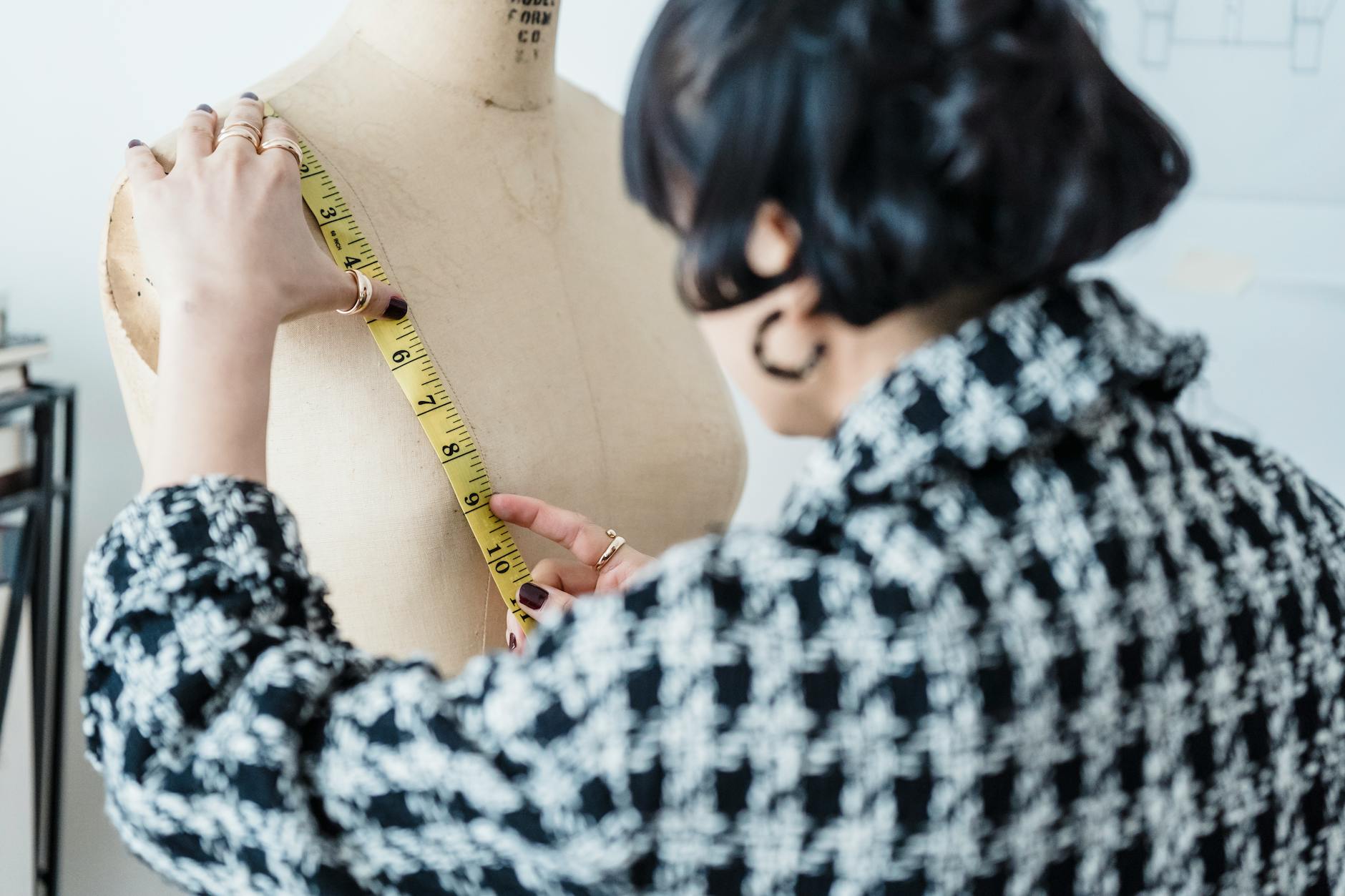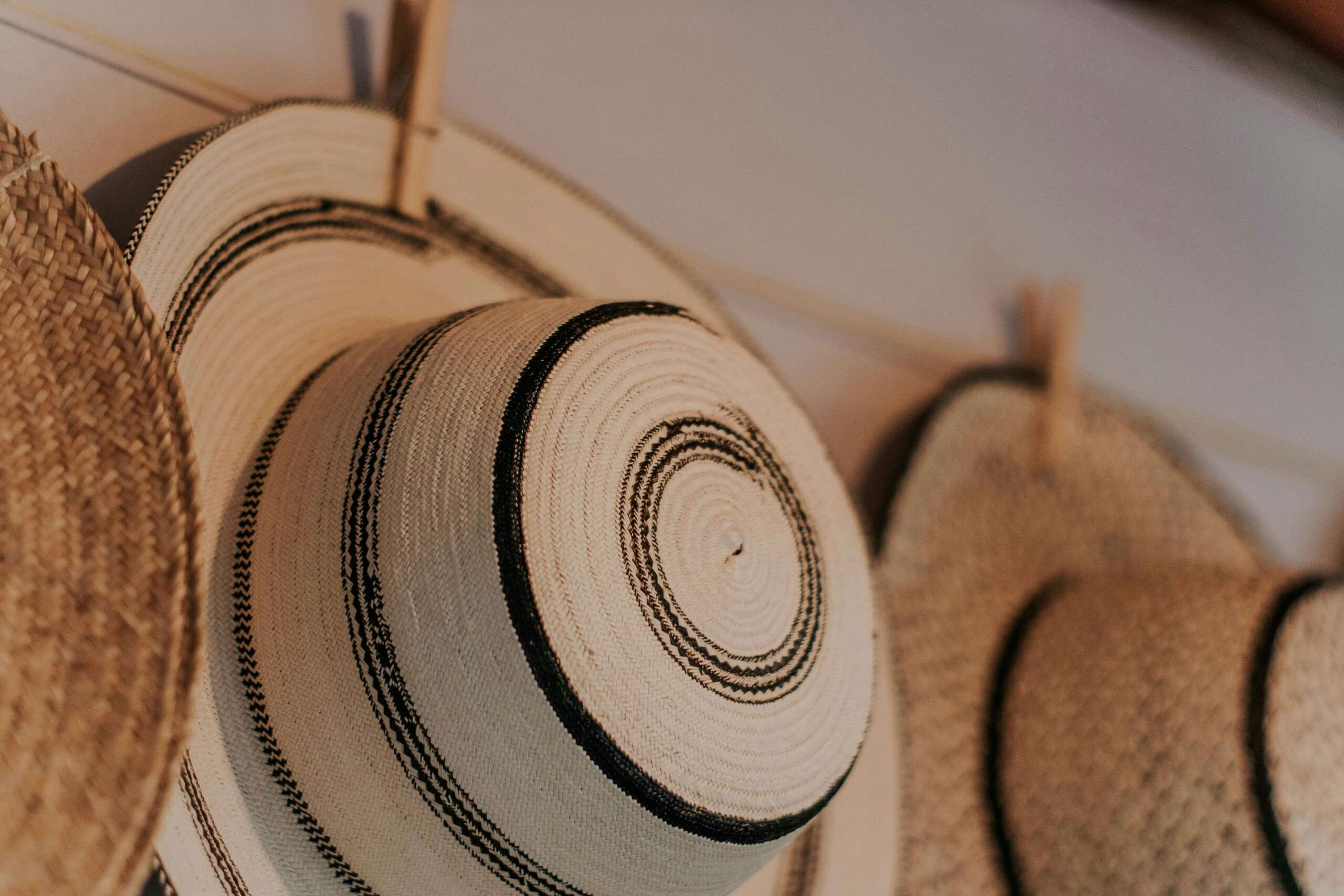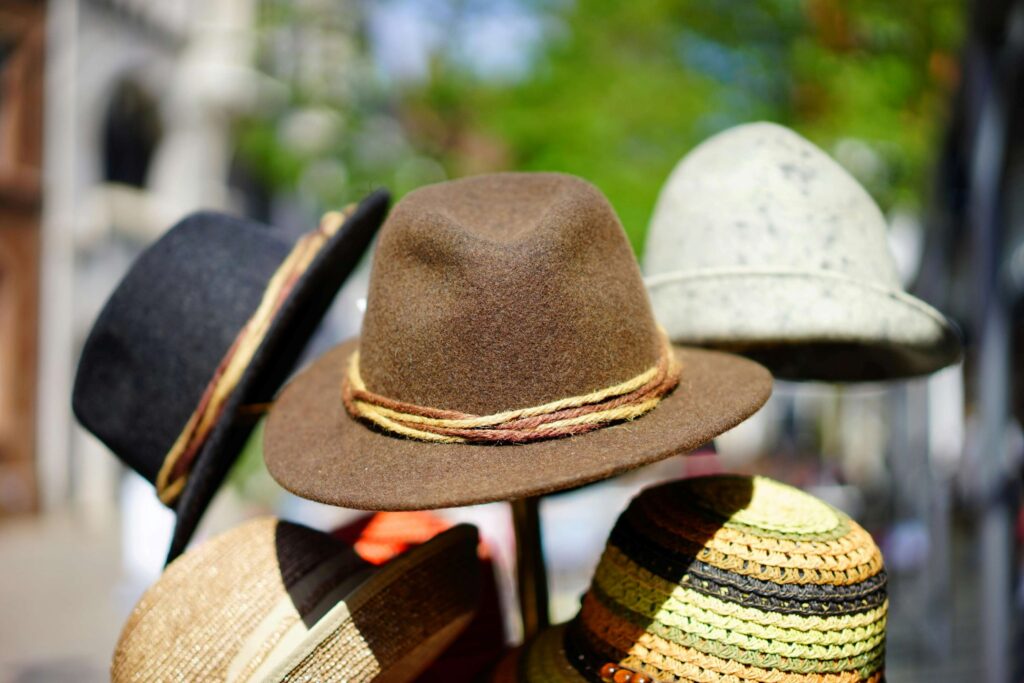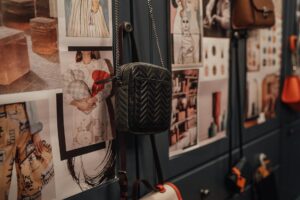Key takeaways
- Use SVG/PDF templates and print a 1:1 control line before cutting.
- Rule of thumb: use workshop starter crown and brim targets as a base, then approve one lab sample per size block.
- Common pitfall — brim flaring or shallow crowns; fix with interfacing, blocking tension, or panel fit checks.
Pattern elements, measurement table, and file formats
This section explains core measurements and what we include in each pattern pack. The numeric ranges below are studio starter targets from our millinery workshops; always confirm on a lab sample before production. For textile test standards, consider industry guidelines such as the AATCC colorfastness standards.
Core pattern elements
- Crown height — vertical distance from sweatband line to crown top.
- Brim width — from crown base to outer brim edge.
- Seam allowance — margin added for stitching and shaping; choose narrower allowances for fine fabrics and wider for heavy materials.
- Panel count — how many pieces form the crown (e.g., 6-panel baseball cap vs single-piece blocked crowns).
Starter pattern table (studio targets)
Use these as starting targets for lab samples. These values reflect common workshop practice and should be confirmed on a size-matched headform.
| Style | Starter crown height | Starter brim width | Panels |
|---|---|---|---|
| Fedora (blocked) | ~4.0–4.5 in | ~2.0–3.0 in | 1 (blocked) |
| Baseball cap (6-panel) | ~3.5–4.5 in | visor ~2.75–3.25 in | 6 |
| Bucket hat | ~2.5–3.25 in | ~1.75–2.5 in | 4 |
| Beanie (knit) | ~3.5–5.0 in | none | 1 |
| Trilby (blocked) | ~3.5–4.0 in | ~1.5–2.0 in | 1 (blocked) |
| Pork pie (blocked) | ~2.0–3.0 in | ~1.0–1.75 in | 1 (blocked) |
Files we deliver
- Layered SVG and PDF at base size (grain, stitch line, seam allowance, notches, trim placement).
- Graded sizes or a grading rule, DXF for CNC on request, and a one-page assembly map.
- Always print a 1:1 control line and measure it before cutting or importing to CAM.
See a related product for bulk baseball cap orders: baseball cap.

Sampling, grading, and production notes
Approve one lab sample per size block. Expect one round of adjustments after each sample unless the first matches the sign-off checklist. Confirm file version control and a sign-off sheet before bulk runs; discuss MOQ and lead times with your supplier early.
How to scale and approve samples
- Start from a base head circumference or your brand’s fit block and mark crown circumference on the pattern.
- Grade at the sweatband, crown seam, and brim edge; use radial grading for brims to keep the curve smooth.
- Make a muslin or canvas sample for each size block; check fit on a size-matched headform and measure crown height at three points.
[Experience Note] Blocking a fedora or trilby requires a hat block and steam; sewn crowns (baseball, bucket) do not. Blocking reshapes the crown and can change raw measurements—plan for this when approving patterns (see hat blocking techniques).
For blocking guidance see: hat blocking techniques.
Procurement checklist
- Approve lab sample(s) and sign-off document.
- Confirm file layers and CNC/DXF needs, and agree grading rule.
- Clarify MOQ, lead time, packaging, and inspection points with supplier.
- Plan a pilot run (small MOQ) to validate decoration, labels, and trim placement.
For bulk runs and ordering options see our bulk runs page.

Quick comparison: fit effort vs production complexity
| Style | Fit precision | Production complexity |
|---|---|---|
| Fedora | High | Medium (blocking, trims) |
| Baseball cap | Medium | Low (sewn, panels) |
| Bucket hat | Low | Low |
FAQ
- What file formats should pattern files include?
- Deliver layered SVG and PDF at 1:1 scale with grain, stitch line, seam allowance, and notches. Add DXF for CNC on request. Always include a 1-inch (1 in) control line on a print for scale checks.
- How do I check a pattern is to scale after printing?
- Measure a printed control line at 1:1; if it does not match, re-export with correct units and DPI. Test on a CAM import with a small probe cut first.
- Which seam allowance should I set for different fabrics?
- Use narrower allowances for fine felt and lightweight woven fabrics and wider allowances for heavy felt, straw edges, or where topstitching reduces the usable seam. Always confirm the allowance on a lab sample.
- What QC checks must be performed on the first lab sample?
- Measure crown height at three points, check brim width front/side/back, verify seam allowance and notch alignment, and confirm fit on a size-matched headform. Record adjustments in the sign-off sheet.
- Are there compliance tests I must request from suppliers?
- Request colorfastness testing for dyed textiles (see AATCC standards) and check for restricted substances if you sell in regulated markets (see REACH). For children’s trims and small parts check relevant CPSC rules in the US.




